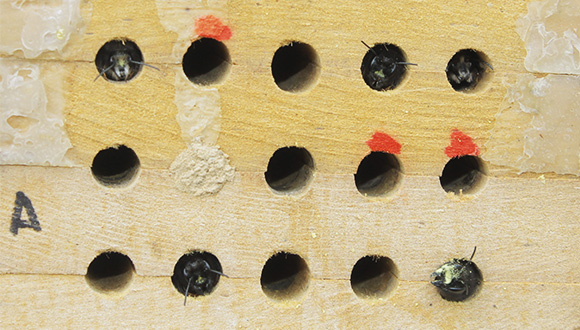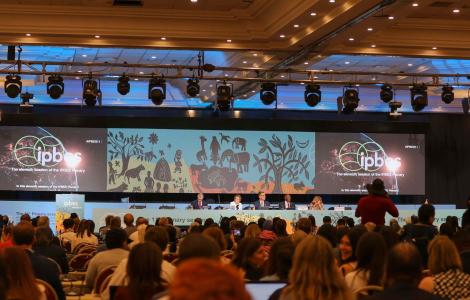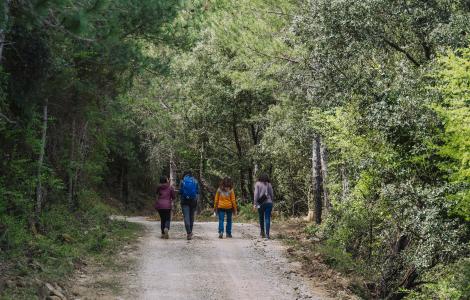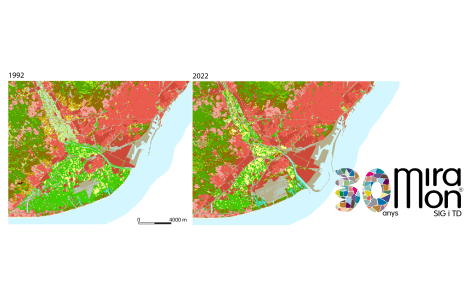Sergio Osorio defends his doctoral thesis and shows that the rules of ecology can still be revised

Are the insects which begin their adult life in the coldest months the largest? An accepted paradigm within ecology, Bergmann's rule, says that organisms in the coldest regions of the Earth tend to be larger. Two months ago, Sergio Osorio presented his doctoral thesis at CREAF in which he analyzed this principle to test if seasonality is also related with body size.

It was 1996 when Sergio Osorio made a temporary departure from the scientific world. He had studied biology at the University of Barcelona and had spent a number of years studying cockroaches in order to understand their vital functions and identify an effective biorational pesticide. However, he saw the potential future as a researcher unstable and decided not to continue. However, ten year later, he decided to ask for a leave of absence from his workplace and begin his thesis with Jordi Bosch and Xavier Arnan, two ecologists at CREAF. Since then, seven years have passed - years dedicated to wasps and bees, their phenology, and their relationships with associated parasitoids.
The new doctor tells us about how his work began: "I found myself in front of a strange fact, that the different bee species found during the year begin their periods of flight in different weeks and their body sizes also differ...In this case, is there a relationship between the body of each species and the time of the year in which it begins to fly? This is where my research began." Sergio explains that he began paying attention to the larger species which began their flight during the first weeks of the year, which in Spain are the coldest. The reason behind the difference in size of the bees could be due to the temperature in the environment, agreeing with Bergmann's rule , which says that animals in colder regions tend to be large: this was the question that Sergio set out to answer.

"From 27.8 mg of mass a bee behaves as endotherm and follows Bergmann's rule, below this size not"
Bergmann’s rule, however, has traditionally been used to compare temperature gradients of different regions (latitudinal or altitude) and has only been described for organisms that can generate heat internally (endotherms). Sergio’s work, on the other hand, was based on a temporal gradient (different periods of the same year in the same region) and the study subjects were insects, which generally speaking cannot generate heat internally (ectotherms). However, in certain groups of insects, including bees, it has been shown that the largest species have some endothermic capacity. For this reason, Dr. Osorio tried to show that Bergmann's rule could also be applied to insects beginning at a certain size threshold throughout the seasonal gradient. "As a final conclusion, we obtained interesting results: there is a limit to the degree to which a community of bees follows Bergmann's rule: this limit is 27.8 grams of mass. Above this value, bees behave like an animal endotherm, and the bigger the species, the sooner is its period of flight (closer to winter when it is colder), just as the rule predicts. Below this size, bee species behave like ectotherms, and the relationship between their body size and period of flight no longer exists. This also coincides with what has been seen in other ecothermic organisms, which, in general, do not comply with the rule.”
"Farmed areas are richer in species than forests"
Sergio's thesis also inlcuded other interesting findings. "One of my parallel lines of research was to understand if the nesting environment and surrounding landscape affect the relationships of solitary bees and wasps with their associated parasitoids. The results indicated that this was the case but also went against the hypothesis. Farmed areas are richer in species than forests, and the interactions are of greater number and diversity," he explains. Continuing: "On farms there are more hiding places to make nests, wildflowers along roads, and open crops to pollinate. When considering extensive agriculture, this much is clear."
The ecologist now finds it almost impossible not to continue working in science and hopes it will be his vocational profession. However, it is unlikely that he will remain in Spain, and is considering other countries such as Mexico. Whatever his decision, he is certain that he will not abandon his professional and emotional ties with CREAF.
THESIS
Osorio, S. (2017). Spatio-temporal varyability of bee/wasp communities and their host-parasitoid interaction networks. Universitat Autònoma de Barcelona. Co-directors: Jordi Bosch i Xavier Arnan.
Noticias relacionadas

El IPBES publica dos informes para transformar la forma en que nos relacionamos con la naturaleza, conservarla y sobrevivir

El impacto social de la investigación se consolida en la cultura científica del CREAF



